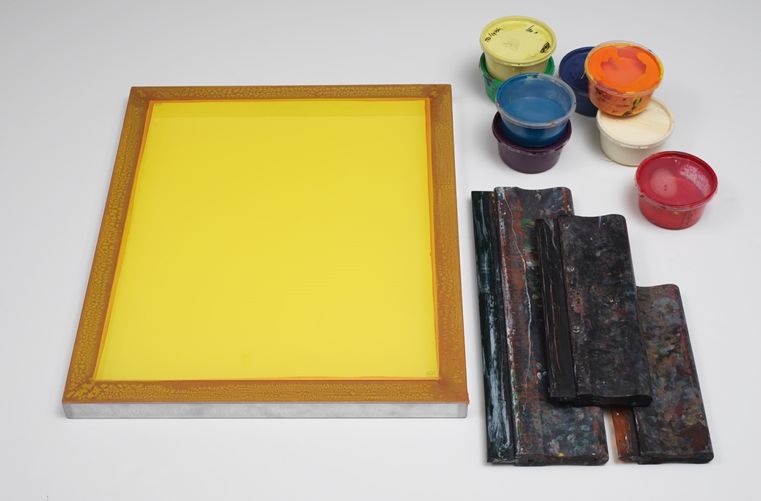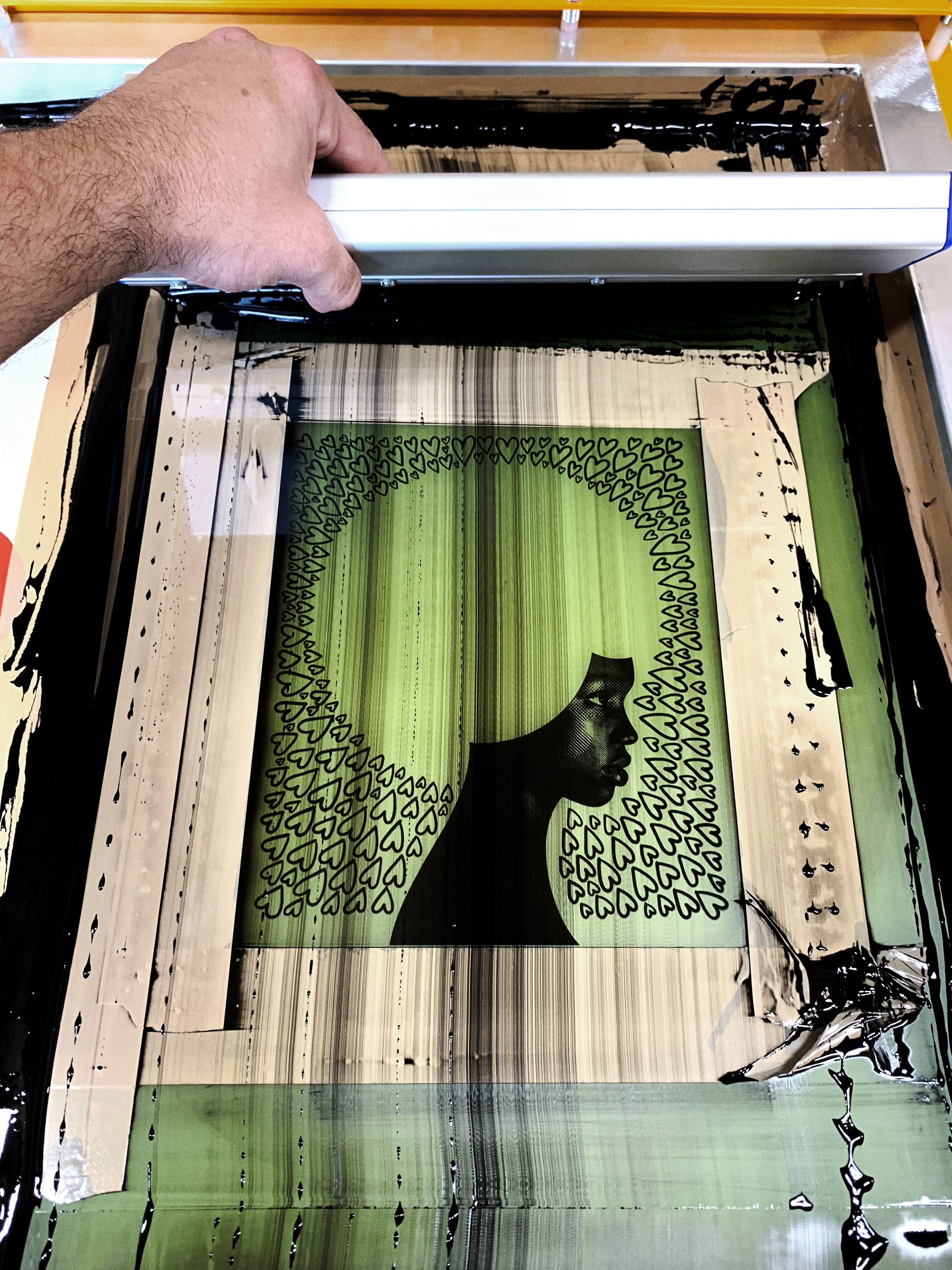ChatGPT said: 10:9 Design Abilene: local experts for custom apparel and branding
Discover the Numerous Types of Screen Printing Techniques for Your Next Job
Screen printing supplies a diverse variety of methods that can enhance any kind of creative job. From traditional techniques like serigraphy to modern-day innovations such as direct-to-garment printing, each technique has its unique benefits. Specialty choices, consisting of metal and green inks, present a lot more opportunities. Understanding these techniques can significantly impact the final result. The challenge lies in choosing the most appropriate approach for specific needs and wanted effects. What variables should one think about?

The Fundamentals of Screen Printing
Screen printing may appear complicated, it is essentially a straightforward process that entails transferring ink via a mesh screen onto numerous surface areas. The technique starts with the creation of a pattern, which specifies the style to be published. This stencil is connected to a mesh screen, generally made of polyester or nylon. Once the stencil remains in area, ink is put on the screen and pressed through the mesh making use of a squeegee, resulting in the wanted pattern being printed on the underlying material.
Screen printing can be performed on a vast array of substrates, consisting of paper, plastic, and textile, making it a versatile option for numerous jobs. The process permits detailed styles and dynamic colors, making it preferred in industries such as art, fashion, and advertising. Recognizing these essentials equips individuals with the fundamental knowledge required to check out more innovative techniques in screen printing.
Traditional Screen Printing Techniques
Traditional screen printing methods have actually been employed for centuries, maintaining the craftsmanship and artistry of this method. This strategy utilizes a mesh screen to transfer ink onto a substratum, such as textile or paper, enabling for durable and dynamic layouts. The procedure starts with developing a pattern, which obstructs certain locations of the screen to regulate where the ink will be used.
One popular technique is serigraphy, commonly utilized for limited editions and artistic prints. Another is the use of water-based inks, which are environmentally friendly and offer a soft feeling on textiles - 10:9 Design Company. In addition, standard approaches can consist of hand-operated printing, where artisans apply ink with a squeegee, ensuring accuracy and interest to information
These techniques stay valued in the sector for their tactile high quality and the special textures they create, appealing to both developers and customers that appreciate the heritage of screen printing.
Digital Screen Printing Innovations
As the need for faster manufacturing and personalization in the printing market has surged, electronic screen printing developments have actually arised as a game-changer. This technology mixes conventional screen printing approaches with digital processes, enabling fast prototyping and complex designs that were previously hard to accomplish. One considerable advancement is the intro of direct-to-garment (DTG) printing, which assists in high-grade, full-color prints on different textiles without the need for displays. In addition, innovations in ink formulas have brought about environment-friendly options that maintain vivid colors while reducing ecological effect. The use of automated systems even more enhances production, decreasing labor expenses and improving precision. These developments not only cater to small batch orders and customized designs but also permit quicker turn-around times, making them optimal for companies concentrated on meeting customer demands in a busy market. Digital screen printing, as a result, represents a vital development in the domain of printing methods.
Specialized Screen Printing Approaches
Checking out specialty screen printing techniques discloses a diverse array of strategies that push the borders of creative thinking and functionality in the printing market. Among these, glow-in-the-dark inks offer an one-of-a-kind visual impact, making layouts come alive in low-light conditions. Metal inks, known for their sparkling surface, add a touch of high-end to printed products. Another ingenious technique is discharge printing, which eliminates color from the textile instead of including ink, causing a soft, classic feeling. High-density printing produces an elevated texture externally, improving responsive involvement. Furthermore, water-based inks are acquiring appeal for their vibrant shades and decreased environmental impact. Each of these specialty methods satisfies particular style demands, enabling brands and artists to develop standout items that reverberate with their target markets. By leveraging these methods, services can directory boost their screen printing projects to new elevations, making certain remarkable impressions.
Eco-Friendly Screen Printing Options
Green screen printing choices are acquiring grip as the industry moves towards sustainability. Sustainable ink options and the use of biodegradable products are vital parts in lowering the environmental effect of the printing procedure. By embracing these methods, screen printers can add to a more lasting future while preserving top quality results.
Sustainable Ink Choices
.png)
Biodegradable Products Usage
As the screen printing market progresses, the unification of eco-friendly products is becoming increasingly important for ecologically mindful practices. Producers and developers are currently exploring inks and substratums made from all-natural, renewable resources that decay extra efficiently than traditional counterparts. These eco-friendly options minimize plastic waste and minimize ecological effect, straightening with the expanding demand for sustainable products.
Typical examples consist of water-based inks and organic cotton fabrics, both of which minimize dangerous chemicals and promote eco-friendliness. Brands that embrace these products site here usually boost their market appeal, attracting customers that prioritize sustainability. As recognition of ecological problems remains to rise, the change in the direction of naturally degradable products in screen printing is likely to get momentum, promoting a greener sector standard.
Picking the Right Method for Your Task
Just how can one determine the most appropriate screen printing strategy for a specific project? The decision pivots on a number of factors, including the material to be printed on, the intricacy of the design, and the wanted manufacturing volume - 10:9 Design contact. Direct-to-garment printing is suitable for detailed layouts with various colors, while traditional screen printing succeeds for larger runs of less complex graphics.
In addition, factor to consider of the end-use of the printed thing is vital. For exterior applications, strategies that offer resilience and climate resistance, such as plastisol ink, may be liked. Conversely, environmentally-conscious tasks might take advantage of eco-friendly materials or water-based inks.
Ultimately, recognizing the job's distinct needs permits an educated choice, ensuring both visual appeal and functional longevity. By examining style intricacy, material compatibility, and manufacturing range, one can effectively select the most suitable screen printing technique to meet their job's objectives.
Often Asked Concerns
What Is the History of Screen Printing?
Screen printing came from in ancient China around 1000 ADVERTISEMENT, evolving through Japan and Europe. By the 20th century, it ended up being prominent in commercial art and style, changing exactly how designs were generated and dispersed globally.

Just how Do I Prepare Art Work for Screen Printing?
To prepare artwork for screen printing, one have to ensure high resolution, utilize an appropriate color setting, create separate layers for each color, and convert text to details, assuring compatibility with the printing procedure and wanted outcome.
What Products Are Ideal for Screen Printing?
The most effective materials for screen printing consist of top notch inks, sturdy displays, and suitable substrates like cotton, polyester, or blends. Additionally, making use of suitable solution and mops can boost the printing procedure and results.
Can I Screen Print in your home?
Yes, screen printing in the house is feasible. With the right materials, arrangement, and strategies, people can develop top quality prints. However, mindful factor to consider of work area and equipment is essential for successful results.

What Are Typical Mistakes in Screen Printing?
Common mistakes in screen printing consist of improper exposure times, poor ink consistency, misalignment of screens, insufficient cleansing of materials, and neglecting to examine prints. These errors can endanger the high quality and precision of the final item.
Screen printing might seem facility, it is basically an uncomplicated process that involves moving ink with a mesh screen onto numerous surface areas. As the need for faster manufacturing and modification in the printing sector has surged, electronic screen printing advancements have actually emerged as a game-changer. Checking out specialized screen printing approaches reveals a varied variety of techniques that press the borders of creativity and capability in the printing market. The ideal materials Full Article for screen printing include premium inks, resilient screens, and appropriate substratums like cotton, polyester, or blends (10:9 Design Company). Common mistakes in screen printing consist of improper exposure times, inadequate ink uniformity, misalignment of displays, not enough cleaning of materials, and overlooking to evaluate prints